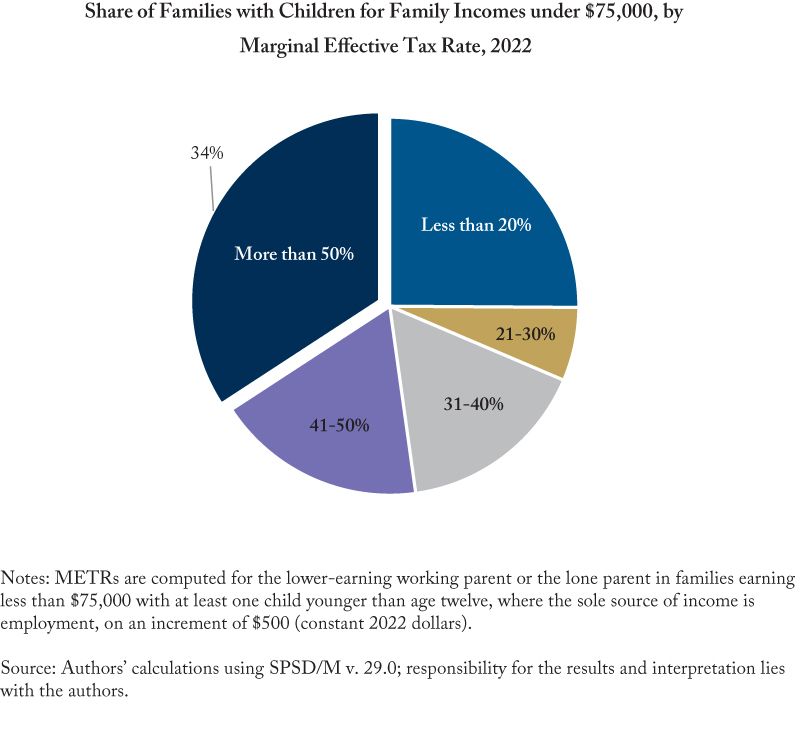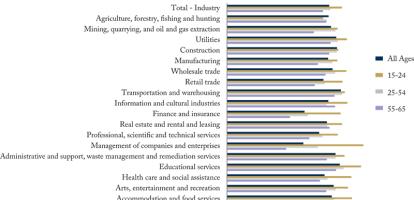The tax system’s full impact on a family’s financial gain from work depends on the combined effect of both taxes paid and cash benefit reductions or benefit "clawbacks."
Benefit clawbacks act as hidden tax rates since they reduce the effective gain from working as a way to generate additional income. Income-tested benefits are clawed back as family income increases to ensure that they provide more support to low-income families. We capture this total impact on families with children in what we call “effective” tax rates. High effective rates reduce the incentive to take on work, and we find that lower-income families face higher rates than higher-income families. As lower-income families increase their income, multiple fiscal benefits are simultaneously clawed back which can result in high effective rates. These effective rates can be severe obstacles for many low-income families wanting to work to get ahead.
The "marginal" effective tax rate (METR) reflects, for working parents, the financial penalty paid through additional taxes and clawed back benefits on earning an additional dollar. The METR is the portion of additional income lost due to additional taxes and clawbacks. This Graphic Intelligence illustrates the share of working lone parents and secondary earning parents in families with incomes below $75,000 that face METRs greater than 50 percent. In 2022, over a third of families with incomes below $75,000 face METRs greater than 50 percent. Put another way, 34 percent of lower-income parents would bring home less than half of a dollar for every extra dollar they would earn.
To learn more about effective tax rates and the impact they have on working decisions for families with children, please read the C.D. Howe Institute's new report from Alexandre Laurin and Nicholas Dahir.





